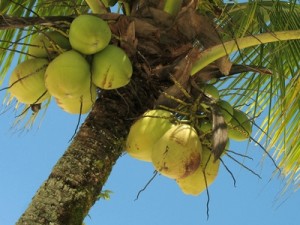
While classically known in biblical passages like Luke 6:39, the “blind leading the blind” metaphor is also found outside of Scripture. In Horace, it exists as “the blind leader of the blind.” It is also found in the Katha Upanishad, an important Hindu religious text: “Abiding in the midst of ignorance, thinking themselves wise and learned, fools go aimlessly hither and thither, like blind led by the blind.”
In Luke 6:39, Jesus asks two rhetorical questions: “Can a blind man lead a blind man? Will they not both fall into a pit?” The answer to the first rhetorical question is obviously “No.” The second question directs attention to the consequences of the blind leading the blind: will they not both fall into a pit? Yes, they will.
Then Jesus declares that a disciple is not above his teacher. When he is fully trained he will be like his teacher. There is a dual meaning to the Greek word translated as “lead” in verse 43. It can refer to guiding someone in reaching a destination or to guide someone in acquiring knowledge. So the two seemingly unconnected statements in verses 39 and 40 are joined to say: Just as a physically blind man cannot lead a person to a destination he cannot see, a blind leader cannot impart knowledge he does not have to a disciple.
In order to reinforce this teaching, Jesus moved on to the hyperbolic contrast of the log and the speck in verses 41 and 42. So how can you help someone remove a “speck” from his eye, when you have a “log” in your own? The presence of the log in you eye blinds you and prevents you from effectively helping another person remove the speck from their eye. As Robert Stein said in his commentary, “Luke understood the parable as referring to the danger of being blind to one’s own faults and at the same time judging others. If a disciple has not learned enough to see his or her own faults and yet judges others, how can such a person truly teach or correct others?”
Now, to drive home what he is saying, Jesus makes another metaphorical comparison, saying that people are like trees. “For no good tree bears bad fruit, nor again does a bad tree bear good fruit.” The conjunction “for” connects the next three verses, Luke 6:43 to 45, with the previous verses, 39 to 42. Paul Tripp said In Instruments in the Redeemer’s Hands that within these verses, Jesus is answering the age-old question of human motivation—why we do the things we do. Just as there is an organic relationship between the roots of a tree and its fruit, there is a connection between a person’s heart and their behavior—what they do and say.
For no good tree bears bad fruit, nor again does a bad tree bear good fruit, for each tree is known by its own fruit. For figs are not gathered from thornbushes, nor are grapes picked from a bramble bush. The good person out of the good treasure of his heart produces good, and the evil person out of his evil treasure produces evil, for out of the abundance of the heart his mouth speaks (Luke 6:43-45).
The roots of the tree correspond to the heart, while its fruit equals our behavior. “We speak and act the way we do because of what is in our hearts.” And if our heart is the source of our sinful behavior, then lasting personal change must always occurs through the heart. Paul Tripp illustrated this principle with a parable of his own.
He has an apple tree in his back yard that year in and year out produces dry, wrinkled, brown, pulpy apples. After several seasons, his wife suggests that they should cut down the tree if they can’t get good fruit from it. Paul gets an idea of what to do. He returns home with branch cutters, a heavy-duty staple gun, a ladder, and two bushels of apples. He then cuts off all the pulpy, wrinkled, brown apples and staples the shiny red apples to every branch of the tree. “From a distance, our tree looks like it is full of a beautiful harvest. . . . For a while, it may seem like the real thing, but it will prove temporary and cosmetic.”
If a tree produces bad apples year after year, there is something drastically wrong with its system, down to its very roots. I won’t solve the problem by stapling new apples onto the branches. They will also rot because they are not attached to a life-giving root system. And next spring, I will get the same problem again. I will not see a new crop of healthy apples because my solution has not gone to the heart of the problem. If the tree’s roots remain unchanged, it will never produce good apples.
Luke doesn’t say here what makes a heart “good.” But Stein in his commentary pointed back to passages like Luke 3:7-9, which calls people to repent and bear good fruit. Just before the passage discussed here, Jesus described what this “good fruit” might look like: love your enemies; bless those who curse you; give to everyone in need. “Be merciful, even as your Father is merciful” (Luke 6:27-36).
From this illustration of how a tree and its fruit represents the connection between our hearts and what we do and say, Paul Tripp drew three principles:
- There is an undeniable root and fruit connection between our heart and our behavior. People and situations do not determine our behavior; they provide the occasion where our behavior reveals our hearts.
- Lasting change always takes place through the pathway of the heart. Fruit change is the results of root change. Any agenda for change must focus on the thoughts and desires of the heart.
- The heart is the target in personal growth and counseling.
Tied now to the Ezekiel 14:1-11 passage discussed in “Spiritual Heart Problems,” we have a greater understanding of the blinding, distorting action of the stumbling block and the heart idol. The elders who came to Ezekiel were truly blind to the idols in their own hearts. And they would not have been able to understand anything the Lord said to them through Ezekiel as long as the “log” of their sin was lodged in their hearts.
A new heart (Ezekiel 36:25-26) was needed. There must be a radical change at the root level. A good tree bears good fruit. A bad tree, ruled by its heart idols, its gillûlîm, will produce bad fruit. You’ll know what is going on in your heart or that of another person by the fruit of their behavior. How can you tell whether or not it is stapled fruit? Watch the tree. Stapled fruit doesn’t last. It gets brown, pulpy and wrinkled and then falls off the tree.
Originally posted on 8/21/2015





